Circuit training has long been known in the fitness industry as a great way to maximize your workout efficiency. There are countless exercises that could be a part of a great circuit, and several different ways in which those exercises could be programed. So how do you sift through all of that information to create the best circuit for your clients’ needs? Here are a few tips for setting up the best circuit to match specific fitness goals.
How to Create a Circuit Workout
#1 – Choose your timing intervals.
When it comes to using a circuit to meet your exercise goals, choosing the right work-to-rest ratio is key. Whether you want to lose weight, improve your cardiovascular health or improve your VO2max for athletic performance, proper timing of exercise verses rest time is what will lead to real results.
| Type of Circuit |
Work Time |
Rest/Active Recovery Time |
Work:Rest Ratio |
Best For |
|
Aerobic |
1-5 minutes |
1-5 minutes |
1:1 |
Cardiovascular conditioning |
|
Anaerobic (HIIT) |
15-45 seconds |
30-120 seconds |
1:2-3 |
Metabolic conditioning/ EPOC |
|
Tabata (advanced) |
20 seconds |
10 seconds |
2:1 |
Improve VO2max |
Circuits are made up of work (exercise) for a determined period of time, followed directly by rest or active recovery. If you are new to exercise, using an aerobic circuit is a safe introduction to this type of workout. A work-to-rest ratio of 1:1 is appropriate for an aerobic circuit. This means that the work and recovery times are equal and somewhat steady state (as opposed to high intensity or vigorous). This could mean doing a particular exercise for two minutes, and then doing active recovery for two minutes. Active recovery could be anything from pacing slowly back and forth, slowing down the exercise you are doing, or changing to a different activity that will stabilize your heart rate. Compared to higher-intensity circuits, exercising for a longer interval (usually one minute or more in an aerobic circuit), the intensity of the exercise decreases and the heart rate should stay lower.
For more of a challenge, use an anaerobic circuit to take your fitness to the next level. If you change the work-to-rest ratio to 1:3, the overall work time should decrease to allow for an increase in intensity. For example, if you exercise for 15 seconds and then rest 45 seconds, you should be able to work harder for a shorter period of time, yet recover fully before the next exercise begins. This type of circuit training will have a greater impact on your overall caloric burn, both during and after the workout is completed, which is called excess post-exercise oxygen consumption, or EPOC.
If you are looking to improve performance markers like VO2max, using the Tabata protocol is an option. Tabata training, named after the Japanese speed skating coach and researcher, is highly advanced and should only be used by those who are very fit and have a high cardiovascular threshold. This circuit includes 20 seconds of very high intensity work followed by only 10 seconds of recovery. Learn more about the Tabata protocol from this ACE-commissioned research study.
#2 – Choose the type of exercises.
Circuits can be used for both strength and cardiovascular training—and even both simultaneously—making circuit training ideal for those who are crunched for time. After choosing your timing intervals based on your goals, select a few exercises to put together for one round of your circuit (typically four to eight exercises). These exercises could be any combination of bodyweight (calisthenics) movements, stationary cardiovascular machines, or free-weight resistance exercises. For a true circuit to be successful, however, the exercises that you choose should focus on your specific training goals. For example, if your goal is to improve strength in your legs, try adding a lunge matrix to your aerobic circuit. Want to lose weight to fit back in your skinny jeans? Use full-body exercises like burpees in your anaerobic circuit. If you have performance goals in mind, do your Tabata circuit on a stationary bike or treadmill.
Regardless of the exercises and equipment you choose, make sure to use proper form, especially when you get tired. Because of the increased intensity of circuit training, when fatigue starts to set in, form goes out the window and that’s when an injury might occur.
#3 – Choose the number of rounds.
Depending on the amount of time you have available and your current fitness level, choose how many rounds of your circuit to complete. Only have 30 minutes? After a five- to 10-minute warm-up, use an anaerobic circuit to blast away a few calories by using a 1:3 work-to-rest ratio (work for 15 seconds, rest for 45) and repeating a five-exercise circuit four times. If you include a one-minute recovery period between each circuit round, and add a five-minute cool-down, you’ll still have time to take a five-minute shower before heading back to work.
Remember, whatever timing intervals, exercises and repetition of rounds you choose, be sure to work hard during the “work” periods and actually rest during your recovery time. Here are a few tips on how to create a circuit workout to match specific fitness goals. After a five- to 10-minute warm-up that includes dynamic stretches and light foam rolling, choose the one that works best for you and go for it.
Goal: Time Saver (Aerobic Circuit)
This circuit uses both strength and cardiovascular training to keep the heart rate high while improving overall strength. For your active rest, jog in place or hop on a treadmill for one minute. Using a 1:1 work-to-rest ratio, do the following exercises:
Squats

Lunges
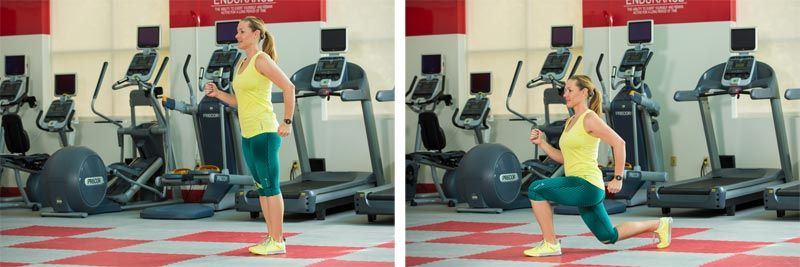
Pushups
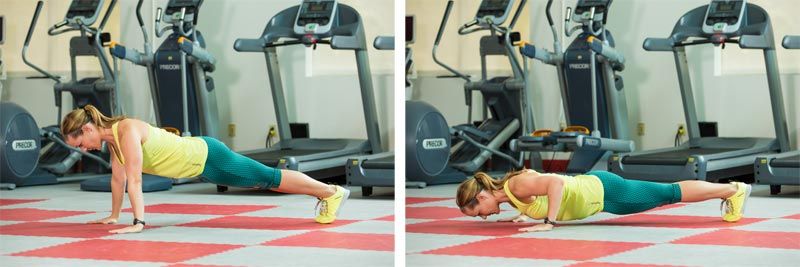
Dips
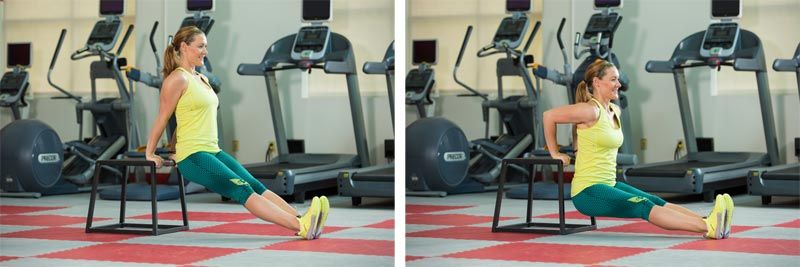
V-sit twists

Perform each movement for one minute and then do one minute of jogging/walking. Focus on form and keep your heart rate at a moderate level (you should be able to have a brief conversation). Repeat this circuit two to three times. Be sure to allow time for your warm-up and static stretching in the cool-down.
Goal: Weight Loss (Anaerobic Circuit)
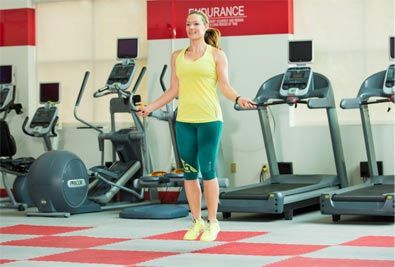
Using a work-to-rest ratio of 1:2, the work for this anaerobic circuit will be performed for 30 seconds following by 60 seconds of active recovery. Jump rope during your active recovery periods between these five exercises:
Squat to alternating overhead press

Plank walks (hold a plank position and walk sideways)
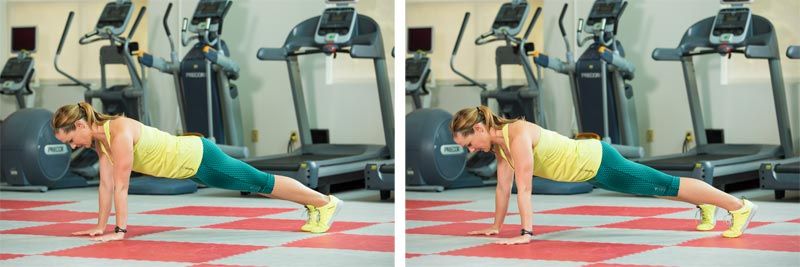
Alternating lunge jumps
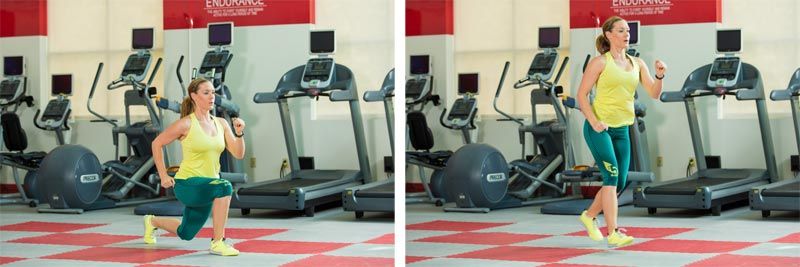
Band rows
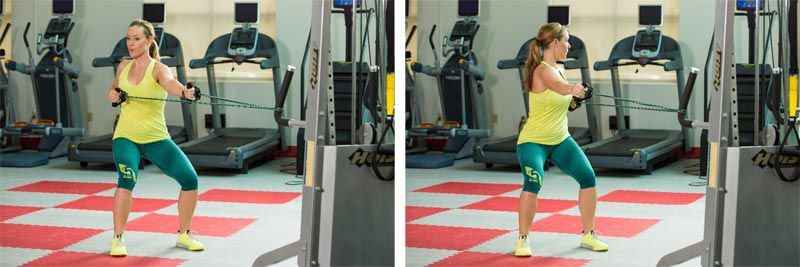
Diagonal lunge with torso rotation (use a band)
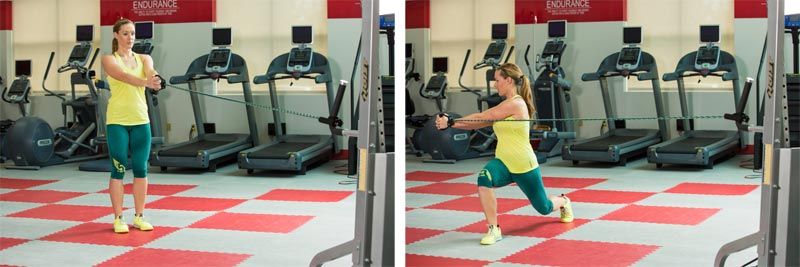
The goal here is to complete as many reps as possible with good form, so stay focused. Repeat the round of five exercises (7 minutes, 30 seconds total) two to three times. To monitor your intensity, you should only be able to speak a few words at a time during the work portion.
Goal: Improved VO2max (Tabata Circuit)
Use a stationary bike or treadmill for this Tabata protocol. Choose a speed/resistance that is very challenging (you should be able to speak only one or two words at a time). For a true Tabata workout, work for 20 seconds (100% effort) and then recover for 10 seconds (this recovery goes fast, so be ready!). Repeat this 20:10 cycle for four minutes (eight rounds). The original Tabata protocol stopped there, but if you’re very fit and are looking to improve your VO2max, repeat two or three more times with one minute of rest in between each four-minute cycle.




 by
by 








